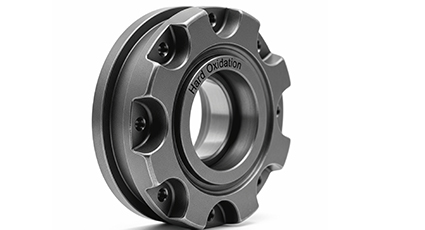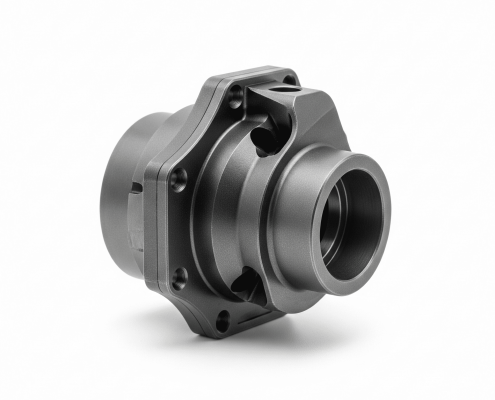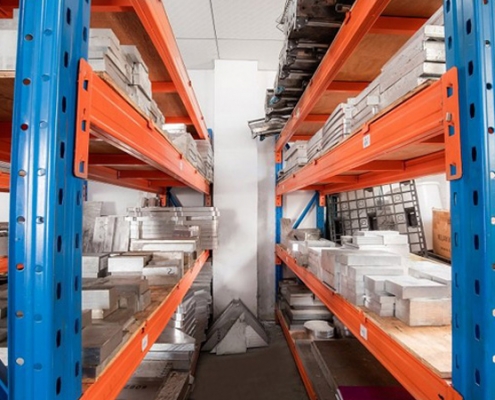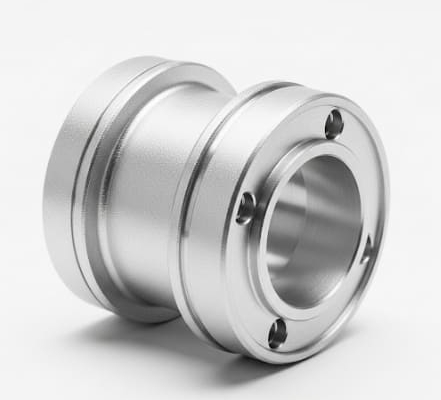Hard oxidation: A Beginner’s Guide
Are you looking for a way to significantly boost the durability, corrosion resistance, and surface hardness of your metal parts? Traditional surface treatments often fall short of meeting the rigorous demands of extreme conditions, leading to premature wear and failure. Hard oxidation technology offers a superior solution, providing unparalleled protection for your precision components.
This specialized surface treatment encompasses a range of processes that create a highly durable and wear-resistant oxide layer on various metal substrates. By transforming the surface into an extremely hard and dense ceramic-like coating, hard oxidation dramatically enhances the material’s inherent properties, making it an ideal choice for demanding applications in industries like aerospace, medical, and automotive.
So, how exactly does this advanced treatment process work, and what benefits can it bring to your specific needs? Let me take you deeper.
What is Hard Oxidation?
Hard oxidation refers to a family of processes that create an extremely hard and wear-resistant oxide layer on the surface of metals. Unlike simple oxidation or corrosion, these methods specifically aim to form a dense, integral film that dramatically enhances the substrate’s mechanical and chemical properties. While hard anodizing is a prominent method within this category, particularly for aluminum, the term “hard oxidation” can also encompass other techniques used on different metals. The resulting oxide layer is typically ceramic-like, offering superior hardness and protection.

How Does the Hard Oxidation Process Work?
The precise method for hard oxidation varies depending on the material, but common principles involve controlled chemical or electrochemical reactions to convert the surface metal into an oxide.
For aluminum and its alloys, the primary method is hard anodizing. This process involves immersing the aluminum part in an acidic electrolyte, typically sulfuric acid, while applying a direct electrical current. The aluminum acts as the anode, and through a controlled electrochemical reaction, the surface of the aluminum is converted into a layer of aluminum oxide. Key parameters like temperature, current density, and processing time are meticulously controlled to ensure the formation of a thick, dense, and hard oxide film. Lower temperatures and higher current densities generally favor a harder, more compact layer.
For other metals, hard oxidation might involve different techniques, such as thermal oxidation or specific chemical treatments, all aiming to build a robust oxide layer that integrates with the base material. Pre-treatment steps, including thorough cleaning and degreasing, are always critical to ensure optimal adhesion and uniformity of the resulting oxide layer, regardless of the specific process used. Post-treatment steps, like sealing, are often applied to enhance the corrosion resistance by closing the pores within the oxide film.

What are the Key Benefits of Hard Oxidation?
Choosing hard oxidation for your CNC machining parts brings about significant performance advantages, enabling them to excel in even the most challenging operational environments:
| Benefit | Description |
|---|---|
| Exceptional Hardness & Wear Resistance | Forms a surface layer as hard as or harder than steel, dramatically improving resistance to wear, friction, and abrasion—ideal for gears, valves, and actuators. |
| Superior Corrosion Protection | Creates a dense, stable oxide barrier that protects against chemicals, saltwater, and harsh environments—perfect for marine and industrial applications. |
| Enhanced Electrical Insulation | Provides excellent dielectric properties, especially on aluminum parts—ideal for electronic housings, heat sinks, or components requiring electrical isolation. |
| Improved Adhesion for Coatings | The micro-porous structure supports strong mechanical bonding with paints, lubricants (e.g., PTFE), and other surface coatings. |
| Dimensional Stability & Precision | Ensures uniform, predictable layer thickness, maintaining tight tolerances critical in precision CNC machining applications. |
What Materials Can Be Hard Oxidized?
While aluminum alloys are the most common materials for hard oxidation, primarily through hard anodizing, various other metals can also undergo processes that create hard, protective oxide layers, though sometimes referred to by specific process names.

For aluminum, alloys like 6061 and 7075 are frequently hard anodized to achieve high hardness and wear resistance. The specific alloy composition can influence the appearance and precise properties of the resulting oxide film. For example, some alloys might yield darker or lighter gray tones after hard anodizing. Other materials that can undergo forms of hard oxidation or similar surface hardening include:
- Titanium: Can be thermally or electrochemically oxidized to form hard, biocompatible titanium oxide layers.
- Magnesium Alloys: Can be processed to create hard, corrosion-resistant oxide coatings.
- Steels: While not typically “oxidized” in the same way as aluminum, processes like black oxide coating offer some corrosion resistance and a hard finish, though not to the same degree of hardness as hard anodizing on aluminum.
The table below focuses on common aluminum alloys and their response to hard anodizing, the most prevalent form of hard oxidation:
Frequently Asked Questions About Oxidation
What are the Three types of Oxidation Processes?
The three main types of oxidation processes for metals are natural oxidation, chemical oxidation, and electrochemical oxidation. Natural oxidation occurs through exposure to air over time. Chemical oxidation involves controlled reactions with oxidizing agents. Electrochemical oxidation, such as anodizing, uses electric current to form a protective oxide layer, commonly used on aluminum for enhanced durability and corrosion resistance.
What is a Fast Oxidation Called?
Fast oxidation is commonly referred to as combustion. It’s a rapid chemical reaction between a substance and oxygen that produces heat and often light. Unlike slow oxidation (such as rusting), combustion happens quickly and is typically associated with burning, like fire. In industrial contexts, rapid oxidation can also describe processes like thermal oxidation used in material treatments.
Is Oxidation the Same as Rust?
Oxidation and rust are related but not the same. Oxidation is a general chemical process where a material loses electrons, often reacting with oxygen. Rust specifically refers to the reddish-brown corrosion product formed when iron or steel oxidizes in the presence of moisture and oxygen. So, while rust is a type of oxidation, not all oxidation results in rust.




